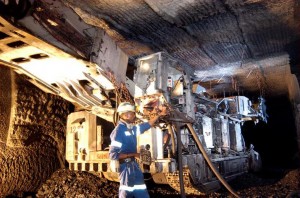 Print a Sign-In Sheet | Spanish Version Coming Soon
Print a Sign-In Sheet | Spanish Version Coming Soon
- Position equipment for servicing:
- Fall of roof or rib:
- Always park equipment to be serviced in an intersection with ample clearance from ribs. Examine roof and ribs and correct any hazardous condition.
- Moving equipment:
- Park out of haul roads away from other equipment. Stay clear of equipment delivering oil and grease. After delivery, ensure delivery equipment is parked away from equipment being serviced, with power off and brake set.
- Fall of roof or rib:
- Check and fill hydraulic tank:
- Electricity:
- Keep equipment off of cables. Clear up any nearby cables so they won’t have to be walked on. Do not set service material on cables.
- Hydraulic oil under pressure:
- Step back in clear after hookup before starting pump to fill tank.
- Pump shaft or coupling:
- Wait until pump stops and switch is off before putting hands around pump area.
- Filler hose:
- Stay out of line of movement of filler hose when removing or storing in compartment.
- Electricity:
- Block and secure equipment:
- Struck-by equipment:
- Ensure equipment is properly blocked, secured, locked, and tagged. Post warning sign and strobe light in visible area of operator’s compartment while servicing equipment. Set cutter and loader head firmly on bottom, or, if in raised position, block it securely. Lock bit switch out. Keep main breaker off and allow no persons near controls.
- Struck-by equipment:
- Grease equipment:
- Slip or trip:
- Keep equipment clean and free of grease or oil.
- Grease under pressure:
- Examine grease hoses and repair defects. Do not allow grease to build too much pressure. Try to determine cause and replace fittings, etc.
- Slip or trip:
KEMI does not assume liability for the content of information contained herein. Safety and health remain your responsibility. This information is to be used for informational purposes only and not intended to be exhaustive or a substitute for proper training, supervision, or manufacturers’ instructions/recommendations. KEMI, by publication of this information, does not assume liability for damage or injury arising from reliance upon it. Compliance with this information is not a guarantee or warranty that you will be in conformity with any laws or regulations nor does it ensure the absolute safety of any person, place, or object, including, but not limited to, you, your occupation, employees, customers, or place of business.

